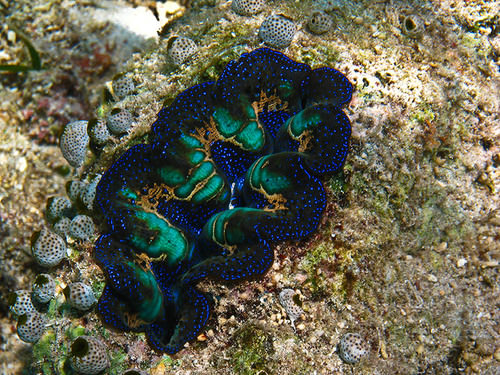12.14 植物类原生者生态学 -- -- 先进
章节大纲
-
Why is the swamp green?
::为什么沼泽是绿色的?It is covered with a layer of . Sometimes this is known as an algal bloom , which forms when there is an excess of nutrients , particularly phosphates. Algal blooms may have millions of algal per milliliter of .
::它被一层层覆盖。有时,它被称为藻华,当养分过剩,特别是磷酸盐时,它就会形成。 藻华可能每毫升就有数百万藻华。Ecology and Significance of Plant-like Protists
::植物类原生生物体的生态和重要性Algae are most prominent in bodies of water, but are also common in environments. However, terrestrial algae are usually very small and are far more common in moist regions than in dry ones, because algae do not have and other adaptations to live on land. Algae are also found on snow and on exposed rocks, in with a , creating lichen .
::藻类在水体中最为突出,但在环境中也很常见,然而,陆地藻类通常很小,在潮湿地区比在干燥地区更为常见,因为藻类没有在陆地上生存的藻类和其他适应措施。 藻类还存在于雪上和暴露岩石上,在一块地衣中,在一块地衣中发现了藻类。Algae and Symbioses
::藻类和共生生物Some of algae form symbiotic relationships with other organisms . In these symbioses, the algae supply photosynthates (organic substances) to the host organism providing protection to the algal cells. The host organism derives some or all of its energy requirements from the algae. Examples include lichens, corals, and .
::一些藻类与其他生物形成共生关系,在这些共生生物中,藻类向保护藻类细胞的宿主有机体提供光合物(有机物质),宿主有机体从藻类中获取部分或全部能源需求,包括地衣、珊瑚和。Lichens: A fungus is the host, usually with a green alga or a cyanobacterium as its symbiont. Both fungal and algal species found in lichens are capable of living independently, although habitat requirements may be greatly different from those of the lichen pair. Together the fungus and the alga or form a composite organism that requires the mutualistic relationship to survive.
::利钦:真菌是宿主,通常以绿色藻类或氰化物作为共生元素。 在地衣中发现的真菌和藻类物种都能够独立生活,尽管生境要求可能与地衣的要求大不相同。 菌类和藻类或形成一个需要互相关系才能生存的复合有机体。Lichen growing on a tree trunk. The structure of lichen provides benefits for both the fungus and the algae or cyanobacteria that is present. The fungus usually provides the lichen with its overall structure and the hyphae of the fungus usually comprises the majority of the lichen's mass. The physical arrangement of the hyphae allows the algae to possess adequate gas exchange, as well as retain water and minerals from rain or airborne dust. The fungi produces acids that aid in the absorption of minerals. It also protects the algae and shades it from intense sunlight. Some fungal species have compounds that are toxic and prevent lichens from being eaten.
::结构为现存的真菌和藻类或蓝藻或蓝藻提供了好处。真菌通常为真菌提供其总体结构,真菌的合金通常占地皮质量的多数。海绵的物理安排使藻类能够拥有足够的气体交换,并从雨水或空中尘埃中保留水和矿物。真菌产生酸,有助于吸收矿物。它也保护藻类和阴凉免受强烈阳光的侵袭。有些真菌种的化合物有毒,防止食用地衣。Corals: Some species of algae, called zooxanthellae, are endosymbionts of and . These zooxanthellae live inside the coral and provide their host with the energy gathered from . Zooxanthellae can provide up to 90 percent of a coral’s energy requirements, which makes them very important to coral reef . The loss of zooxanthellae from the coral host is known as coral bleaching. Zooxanthellae are members of the genus Symbiodinium .
::珊瑚:一些藻类物种,称为动物参保动物,是珊瑚的内生生物和内生生物。这些动物参保动物在珊瑚中生活,为珊瑚的宿主提供从珊瑚中收集的能量。动物参保动物可以提供珊瑚所需能量的90%,这就使得珊瑚对珊瑚礁非常重要。珊瑚宿主对动物参保动物的丧失被称为珊瑚漂白。动物参保动物是人类生物圈的成员。Tridacna crocea. Although in the giant clam family, this small clam rarely gets more than 10 centimeters long. This species is normally found in shallow intertidal coral reef flats where its symbiotic zooxanthellae can get the most sunlight for photosynthesis. Sponges: Green algae live close to the surface of some sponges. The alga is thus protected from predators ; the sponge is provided with oxygen and sugars which can account for 50 to 80 percent of sponge growth in some species.
::海绵:绿藻离一些海绵的表面很近,因此藻类不受食肉动物的保护;海绵得到氧气和糖,占某些物种海绵生长的50%至80%。Summary
::摘要-
Some species of algae form symbiotic relationships with other organisms, such as fungi, coral, and sponges.
::一些种类的藻类与其他生物,如真菌、珊瑚和海绵形成共生关系。
Review
::回顾-
Describe two symbiotic relationships involving plant-like protists.
::描述两种共生关系,其中涉及植物类先质主义者。 -
How is algae important for the survival of coral?
::藻类对珊瑚的生存有何重要?
-
Some species of algae form symbiotic relationships with other organisms, such as fungi, coral, and sponges.


